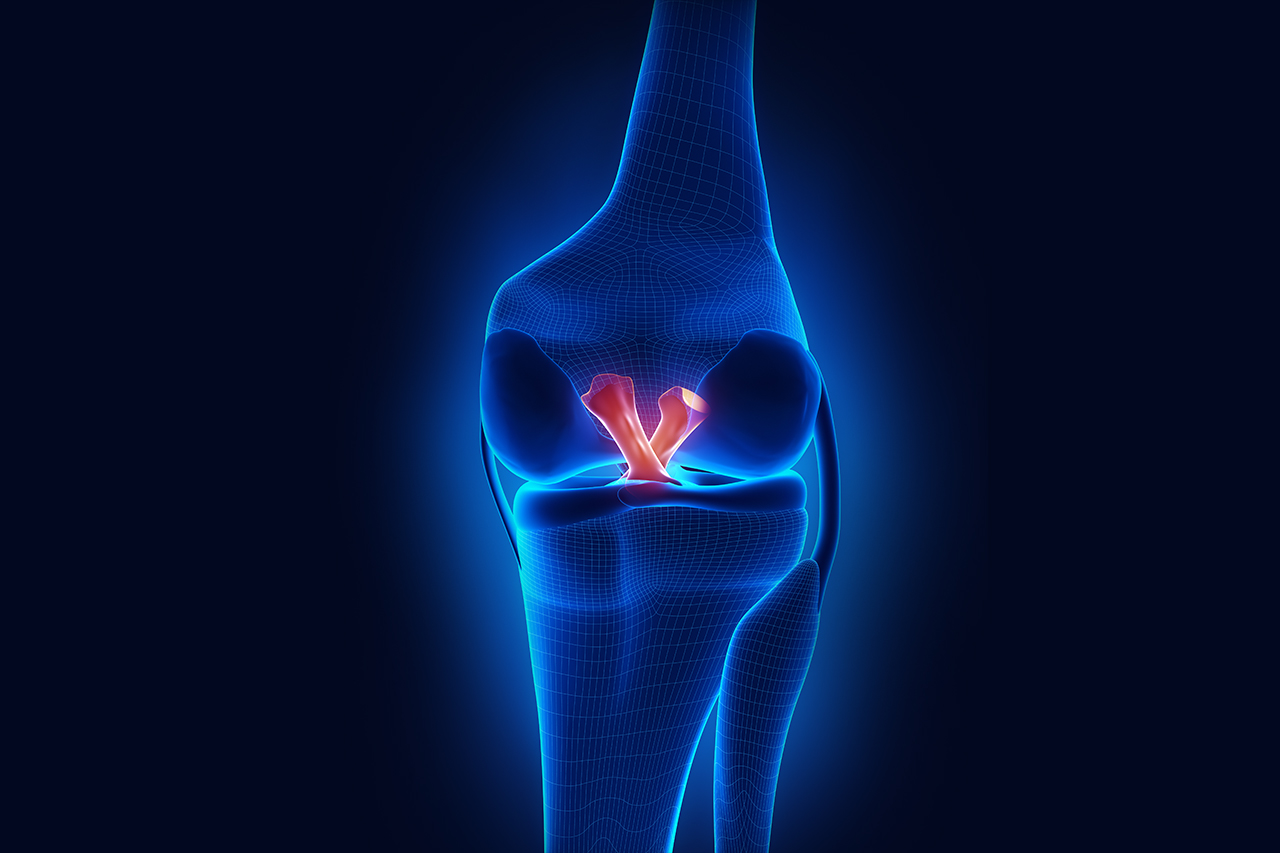Timings
Evercare Hospital Lahore
- Monday - Thursday (11 am - 01 pm)(07 pm - 09 pm)
- Friday (02 pm - 05 pm)(07 pm - 09 pm)
- Saturday (04 pm - 06 pm)
Contact Info
- Phone: 03060603646
- Whatsapp: 03060603646
- Email: Info@drwaqasjavedorthopedics.com
Multi-Ligament Injuries

Multi-ligament knee injuries are severe and complex injuries that involve damage to two or more of the main ligaments in the knee. These ligaments include the anterior cruciate ligament (ACL), posterior cruciate ligament (PCL), medial collateral ligament (MCL), and lateral collateral ligament (LCL). Such injuries often result from high-energy trauma, like car accidents or sports-related incidents.
The Importance of Proper Diagnosis and Treatment
Accurate diagnosis and timely treatment of multi-ligament knee injuries are crucial. These injuries can lead to significant instability, pain, and loss of function if not addressed promptly and effectively. As an experienced orthopedic surgeon, I emphasize the importance of seeking specialized care for these complex injuries to ensure the best possible outcomes.
Recent Advancements in Multi-Ligament Knee Injury Treatment
The field of orthopedics has seen remarkable progress in treating multi-ligament knee injuries. Here in Pakistan, we’re adopting many of these advanced techniques to provide better care for our patients.
Improved Diagnostic Techniques
Advanced imaging technologies like 3D MRI and stress radiographs have enhanced our ability to accurately diagnose the extent of ligament damage. This precision allows for more targeted multi-ligament knee injury treatment plans.
Arthroscopic Surgery
Minimally invasive arthroscopic techniques have revolutionized multi-ligament knee surgery. These procedures offer smaller incisions, reduced tissue damage, and faster recovery times compared to traditional open surgery.
Anatomic Reconstruction
We now focus on anatomic reconstruction, which aims to restore the knee’s natural biomechanics. This approach leads to better long-term outcomes and reduced risk of re-injury.
Advanced Graft Options
The use of allografts (donor tissue) and autografts (patient’s own tissue) has expanded, allowing for more personalized multi-ligament injury repair strategies.
Computer-Assisted Surgery
Computer navigation systems help improve the precision of ligament placement during reconstruction, potentially leading to better outcomes.
Statistics on Multi-Ligament Knee Injuries in Pakistan
While specific data on multi-ligament knee injuries in Pakistan is limited, we can draw insights from global statistics and local orthopedic experiences:
– Incidence: Multi-ligament knee injuries account for about 0.02% of all orthopedic injuries worldwide.
– Demographics: Young males (20-40 years) are most commonly affected, often due to sports injuries or road traffic accidents.
– Common Causes: In Pakistan, road traffic accidents are a leading cause of multi-ligament knee injuries, followed by sports-related injuries.
– Success Rates: With modern multi-ligament knee surgery techniques, success rates have improved significantly. Studies show that up to 80% of patients can return to their pre-injury activity levels.
Traditional vs. Advanced Multi-Ligament Knee Injury Treatment
Let’s compare the outcomes of traditional and advanced treatment approaches:
Traditional Approach:
– Open surgery with larger incisions
– Longer hospital stays (5-7 days)
– Extended recovery period (6-12 months)
– Higher risk of complications
– Limited return to high-level activities
Advanced Approach:
– Minimally invasive techniques
– Shorter hospital stays (2-4 days)
– Faster recovery (4-8 months)
– Reduced risk of complications
– Better chance of returning to pre-injury activity levels
Benefits for Pakistani Patients
These advancements in multi-ligament knee injury treatment offer several benefits for our patients:
- Improved Recovery Times: Minimally invasive techniques lead to faster healing and reduced rehabilitation periods.
- Better Long-Term Outcomes: Anatomic reconstruction and advanced surgical techniques result in improved knee stability and function.
- Reduced Pain: Modern pain management protocols and less invasive surgeries mean less post-operative pain for patients.
- Quicker Return to Daily Activities: Many patients can resume normal activities sooner than with traditional methods.
- Cost-Effective: While advanced treatments may have higher upfront costs, the reduced recovery time and lower complication rates can lead to overall cost savings.
Addressing Common Concerns
Let’s address some frequent questions and misconceptions about multi-ligament knee injuries:
Myth: “Multi-ligament knee injuries always result in permanent disability.”
Fact: With proper multi-ligament knee surgery and rehabilitation, many patients return to their pre-injury activity levels.
Myth: “Recovery from multi-ligament injury repair takes years.”
Fact: While recovery is a gradual process, most patients can return to normal activities within 6-12 months with advanced treatment methods.
Myth: “You can’t play sports after a multi-ligament knee injury.”
Fact: Many athletes successfully return to their sports following appropriate treatment and rehabilitation.
Dr. Waqas Javed’s Expertise
As a consultant orthopedic surgeon specializing in knee and sports injuries, I have extensive experience in multi-ligament knee injury treatment. My training includes:
– Fellowship in Sports Medicine and Arthroscopy
– Advanced training in complex knee ligament reconstruction
– Regular attendance at international conferences to stay updated on the latest techniques
I have successfully treated numerous patients with multi-ligament knee injuries, helping them regain stability and return to their active lifestyles.
Patient Success Stories
While maintaining patient confidentiality, here are two anonymized case studies that illustrate successful outcomes:
Case 1: A 28-year-old male suffered a multi-ligament knee injury in a motorcycle accident. After undergoing advanced multi-ligament knee surgery and dedicated rehabilitation, he returned to his job as a construction worker within 8 months.
Case 2: A 35-year-old female athlete experienced a multi-ligament injury during a football match. Following anatomic reconstruction and intensive physiotherapy, she was able to compete again at a high level within one year.
Post-Operative Care and Rehabilitation
Successful recovery from multi-ligament knee injury repair requires a comprehensive rehabilitation program. In the Pakistani healthcare context, we emphasize:
- Early Motion: Controlled knee movement starts soon after surgery to prevent stiffness.
- Progressive Weight Bearing: Patients gradually increase weight on the affected leg as healing progresses.
- Strength Training: Targeted exercises to rebuild muscle strength around the knee.
- Proprioception Training: Exercises to improve balance and coordination.
- Sport-Specific Training: For athletes aiming to return to their sport.
- Regular Follow-ups: Close monitoring to ensure optimal healing and address any concerns promptly.
The Future of Multi-Ligament Knee Injury Treatment in Pakistan
The field of multi-ligament knee injury treatment continues to evolve, and Pakistan is keeping pace with global advancements. We anticipate:
- Increased use of biological augmentation techniques, such as platelet-rich plasma (PRP) and stem cell therapies, to enhance healing.
- Further refinement of minimally invasive surgical techniques.
- Development of personalized rehabilitation protocols based on individual patient factors.
- Improved access to advanced treatments across Pakistan, not just in major cities.
- Enhanced collaboration between orthopedic surgeons, physiotherapists, and sports medicine specialists for comprehensive patient care.
Find Out Answers Here
Typically, the surgery takes 2-4 hours, depending on the complexity of the injury.
This varies based on your job requirements. Desk jobs may be possible within 4-6 weeks, while physically demanding jobs may require 4-6 months.
Yes, a knee brace is usually recommended for the first 6-12 weeks to protect the reconstruction.
In most cases, multi-ligament injuries can be addressed in a single surgical procedure. However, complex cases may require a staged approach.
Untreated injuries can lead to chronic instability, early onset of arthritis, and significant functional limitations.
REFERENCES

Conditions I Treat

- Knee Injuries
- Orthopedic Infections
- PCL Injuries
- Multi-ligament Injuries
- Joint Replacement
- Kneecap Dislocations
- Knee Replacement
- Sport Injuries of Knee
- Lower Limb Fractures
- Hip Injuries
- Hip Replacement
- Back Pain
- Shoulder, Elbow, Wrist
- Upper Limb Fractures
- Neck Pain